Sunday Summaries 20/03/2016: Oceanhorn & Super Chibi Knight
By Mento 1 Comments
Another week in the bag, another summary of what we've seen and what we're about to see. I suppose the big news is how much the two big rival consoles - I'm excepting Nintendo since they've always had their own "haters gonna hate" strut since the GameCube era - are gearing up for some mid-generation shenanigans. Microsoft, as discussed previously, seem to be going for a more inclusive PC/Windows 10 integration going forward, perhaps unwisely attempting to out-Steam Steam again with their own online digital distribution method, while Sony is prepping up for a substantial "PS4.5" system hardware upgrade as per the news that professional goomba-dodger Patrick Klepek broke earlier this week, shortly before the entire chain of websites he works for legally capitulated to a pair of litigious 24-inch pythons. That's the internet for you.
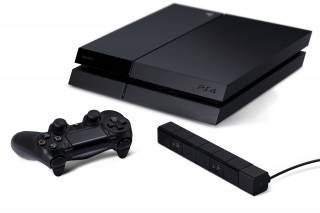
I'm still torn here. I only recently bought this PS4, and in his news article on the PlayStation business (and later again on the Beastcast) Austin make the cogent point that people tend to buy into the console ecosystem over upgrading PCs - which even I have to admit was the smartest investment going into this generation - because there's a certain convenience and stability in a console system which is guaranteed to stay relevant for several years, barring the sort of colored-ring technical fubars that seemed to strike the previous generation with alarming frequency. You might point at the architecture or their increasing amount of versatility, but the final checkbox the new consoles had to tick off before they could truly be equated to PCs was putting consumers in a position where they might buy a £300 system and discover that it'll be obsolete in a year. Likewise, I'm not sure bringing back Games For Windows Live with a different name is necessarily going to work out for Microsoft either. I don't mind that those two are scrambling to find ways to stay competitive - the impetus to improve their products and services always ultimately rewards customers - but I hope E3 presents some better ideas from their respective thinktanks. I've only just gotten acquainted with my shiny new parallelepiped.
In non-game news, I'm getting the impression from Twitter/AV Club buzz that I should watch Daredevil already. I saw Jessica Jones not too long ago, and despite my better judgement I think I've seen all the "Marvel Cinematic Universe" movies besides the original Captain America, but I was put off by how small-scale Agents of S.H.I.E.L.D. was (I'm sure others love it for that same reason - there's no reliance on dragging in a bunch of capes from obscure Avengers serials for a new villain every episode). There's also the time investment too, of course: modern shows are custom-built to be binge-watched these days, or at least the Netflix/Amazon originals are, so that's a whole lot of video gaming I won't be doing while that's going on. Can't ignore the amount of acclaim Daredevil's getting though, and I've still got a few weeks before we're hit with the (completely unrelated) triumvirate of new Archer, new Game of Thrones and new Unbreakable Kimmy Schmidt. Probably some other stuff too; I'm hearing that the wonderfully grim Mr. Robot might be back around Summertime. Never short of something to watch these days, for better or worse (mostly better).
New Games!
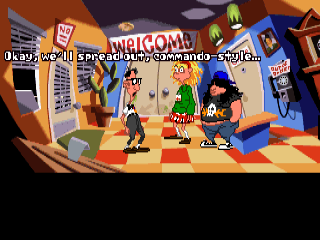
The game I've been looking forward to most that sees a release this week is Day of the Tentacle Remastered: not only was the game due for the same kind of sharpening up that Grim Fandango saw, but it feels like Day of the Tentacle has been completely unavailable to buy for years. Maybe GOG or Steam fixed that semi-recently, but it struck me that the best course of action was to wait for this remastered version to finally see the light of day. Speaking of days, Day of the Tentacle is perhaps my favorite Schafer-related game of all time. While I adore Psychonauts and some of Tim's other adventure games, it's Day of the Tentacle and its many links to the much-loved Maniac Mansion (which is included in its entirety within DotT, if you can find it) that is the top of that list. I'm sure I've completely forgotten all the puzzles - I hope they've implemented a more convenient way of sending one's whole inventory through time via the "Chron-o-Johns" - so that'll be something to look forward to later this year.
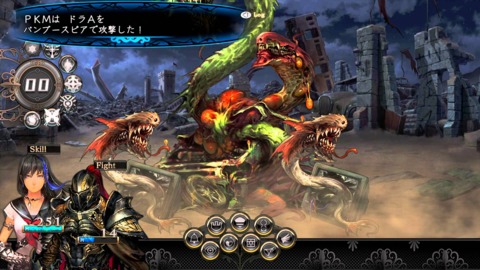
This week also sees the PS4/PSN release of Okage: Shadow King, a goofy Henry Selick-esque PS2 RPG that I've always wanted to check out but couldn't due to region stuff; the attractive if grindy dungeon-crawler Stranger of Sword City, which is oddly enough only getting Xbox One and Vita releases but not PS4; and Hyrule Warriors Legends, the portable version of the ill-conceived but apparently not awful Zelda Musou game from last year. It'll debut the gender-swapped "Linkle" (not Linka? Which is actually a girl's name?), who I imagine will break out and be the star of her own game further down the line in a similar fashion as Tingle. Hell, there's a lot of Zelda characters that deserve their own game more than Tingle, who I believe has three now, as well as his own compilation of throwaway DSi apps. I think I would buy a Happy Mask Salesman game before a Tingle game, and who even knows what that guy is into.
I should probably save this for when it's applicable to all of us in Europe and the US in a couple weeks' time, but this Thursday will also mark the Japanese release of Dark Souls III. I think we're all stoked about it, depending on how much or how little we're choosing to see of all the trailers and early gameplay footage out there, now that Miyazaki's back in the director's chair and they have all those wonderful Bloodborne innovations to add to the Dark Souls model. It's likely I won't be touching it for a few months, given my parsimonious nature, so it's back to the usual cycle of ignoring half the videos that my frequently watched LPers will be putting out come April 12th and onwards. This is the fifth one of these now, and yet it's still the most exciting thing this year.
Wiki!
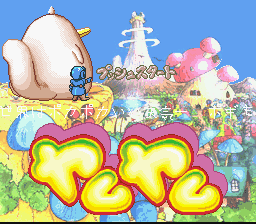
Still on the Super Nintendo, still on February of 1995. Rome wasn't built in a day, and I wish I had worked on an empire-building sim this week so that I might effortlessly segue into discussing the fifteen pages I spruced up in the past seven days. Fifteen's actually kind of lean for me, though it's mostly because five of those had to be created from scratch: Saibara Rieko no Mahjong Hourouki, which appears to be a mahjong game with art direction from the Japanese equivalent of Cathy Guisewite; The Shinri Game 2: Magical Trip, the second in a series of quiz games that determine the player's psychological profile and moral caliber with probing questions about what they might do in certain situations while a bunch of visualizer nonsense plays in the background; Fighter's History: Mizoguchi Kiki Ippatsu!!, a SFC-only sequel/spin-off to the Fighter's History series, the original game of which skewed so closely to Street Fighter II that Capcom took them to court; Kashiwagi Shigetaka no Top Water Bassing, where a little Japanese guy with a big mustache teaches you how to catch bass and nothing but bass; and Yam Yam which... you know, I'm still honestly not sure what it is, but it seems like a novel combination of a rudimentary RPG and Space Harrier but with a giant bird that freaks people out with its loud chirps. Really, it's discovering games like Yam Yam that makes this project worth all the fishing, mahjong and pachinko games.
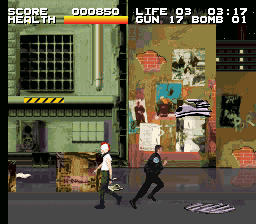
As per usual, let's balance out the hopelessly obscure with some household names. Cryo Interactive's Timecop, anyone? Did you know that David Cage scored this game? I'm guessing he thought it needed more Ellen Page, but at least it probably had enough digitized actors slumming it big time to placate him. There's also Majin Tensei II, the second of the SMT strategy RPG spin-offs: Atlus's mega-franchise would visit the idea again for the more contemporary Devil Survivor series. Finally, the vaguely biographical fighter Dragon: The Bruce Lee Story debuted on the European SNES the same day that the US saw the superlative Arcade-style basketball game NBA Jam: Tournament Edition, which really doesn't seem fair. Especially since Europe had to wait an extra three months before they could pit Will Smith and Jazzy Jeff against the Clintons. More Super Nintendo injustices to come next week...
Tearaway: Unfolded!
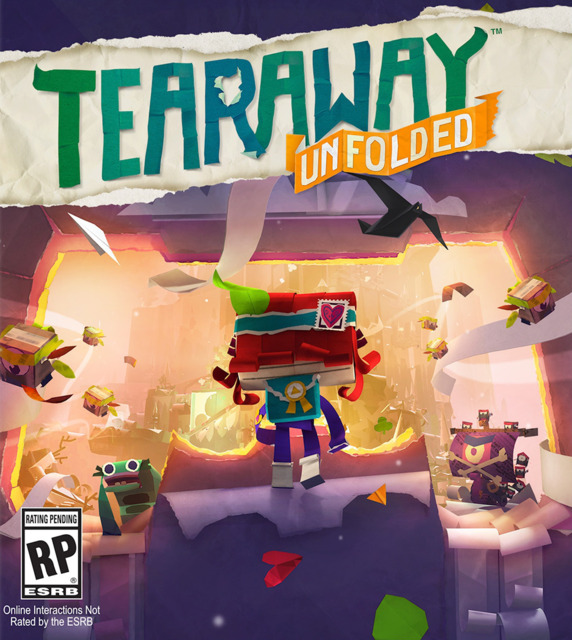
I've got two specific things I want to talk about with regard to Tearaway: Unfolded, and since one of those involves how it ends let's put that at the end of this section behind a spoiler block. As you probably gathered from last week's diatribe on Media Molecule's semi-successor to LittleBigPlanet, I wasn't particulary fond of some core mechanical aspects of Tearaway. I also made the case that focusing on the purely mechanical travails of its 3D platformer design is perhaps missing the point of its gentle and creative message about art and creativity. As a gateway to papercraft and unlocking a world of imagination for the younger set, it's probably a better game for that market than whatever licensed crap still dominates the 3D platforming field, though at the same time it hardly stacks up compared to pillars of the genre like Super Mario 64, Banjo-Kazooie or Sly Cooper.bMost worrisome is how these are problems that haunted LittleBigPlanet too: that game frequently saw just as many accolades for not only its creativity but its opportunity for creativity on the user's side as it saw criticism for how floaty its jumping felt and how unstable its rounded-edged landscapes were for precise platforming. Tearaway can also add "untenable camerawork" and "pointlessly frustrating side-missions" to that list of crimes.
Anyway, neither of the things I wanted to discuss about Tearaway relates to its quality as a platformer; I think I've covered all that and then some already. No, what I want to focus on first is how surprisingly effective its motion controls are. You'd think given everything else I've kvetched on and on about the game on a mechanical level that the motion controls might be its worst transgression; they've certainly been the bane of anything that required a Move "wand", the Xbox Kinect or the Wii Remote, and very rarely contributed anything to the experience beyond an uneasy sense that the control scheme in question was mandated by someone higher up the development chain. I frequently think about how every new system that tried to introduce something like this, whether it's the aforementioned dalliances with motion controls or a feature like the Nintendo DS's touchscreen or the 3DS's 3D or even Amiibos, that games will focus on those hardware features for the first few tumultuous months after their introduction before quietly limiting them to only the most incidental of side features. I've yet to own a Vita and hadn't played anything that made significant use of the DualShock 4's touchscreen, so Tearaway was novel in that regard.
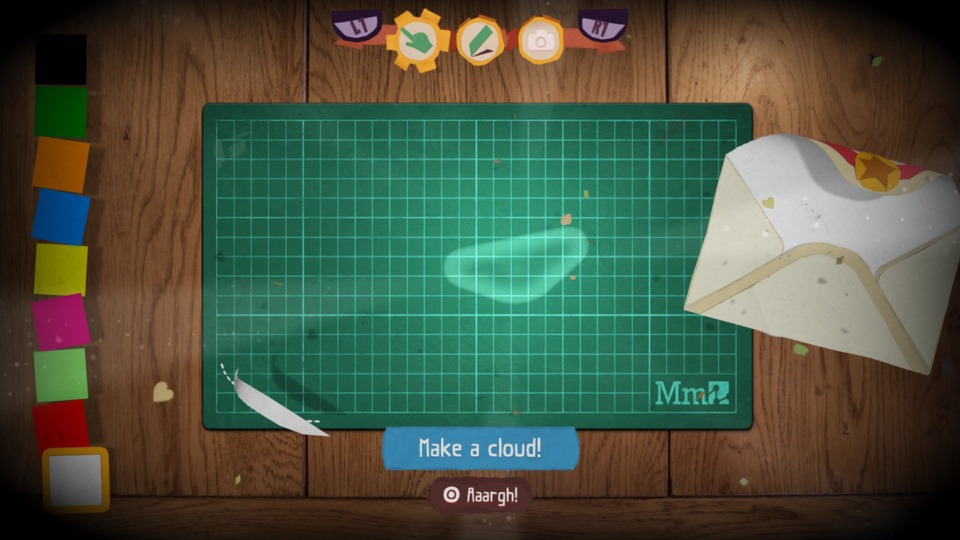
However, its use of the touchscreen and the controller's built-in sixaxis equivalent are actually fairly decent, only occasionally becoming a nuisance due to their imprecision - a trait that was shared with the rest of the game's platforming. As well as using the touchscreen to draw new items in the world, such as a coat of arms for an ancient legion or a new crown for the Squirrel King, you would use it to create gusts of wind by swiping in the direction you wished the wind to go: parts of the paper-thin landscape would then fold away or fold out in response. As for the sixaxis, the game would recognize the controller's triangular light in-game as a spotlight, which the player would move around by tilting the controller. Relying on the gyroscope meant you didn't have to keep it focused on the television, which isn't always convenient, and the game continued to find useful applications for this light: you could hypnotize enemies with it, for one thing, guiding them into traps and off ledges for easy kills. I so rarely find the opportunity to praise motion controls because they feel so or superfluous or, most frequently and depressingly, both. Tearaway doesn't always feel right from a sheer controls and movement standpoint, but I'll give it some kudos for integrating what is traditionally an unmanageable and throwaway aspect meaningfully.
So, the ending then:
Super Chibi Knight!
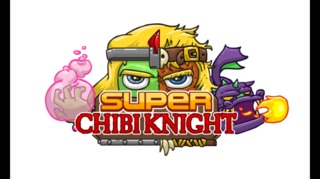
I talked about Super Chibi Knight and the following game in an article I wrote this week extolling the virtues of Indie games that don't so much take the Zelda formula and replicate it wholesale, but are motivated by their limited means and manpower to focus down on one or more of the Zelda essentials: its puzzle dungeons, for instance, or building a smaller-scale game around a style or tone of one Zelda game in particular. In Super Chibi Knight's case, the game is structured similarly to that of Zelda II: The Adventure of Link, in how it breaks up its world into an overworld full of random encounters and new (and sometimes secret) locations to uncover, and a series of 2D side-scrolling dungeons which are occasionally closed off until the player finds an item somewhere else.
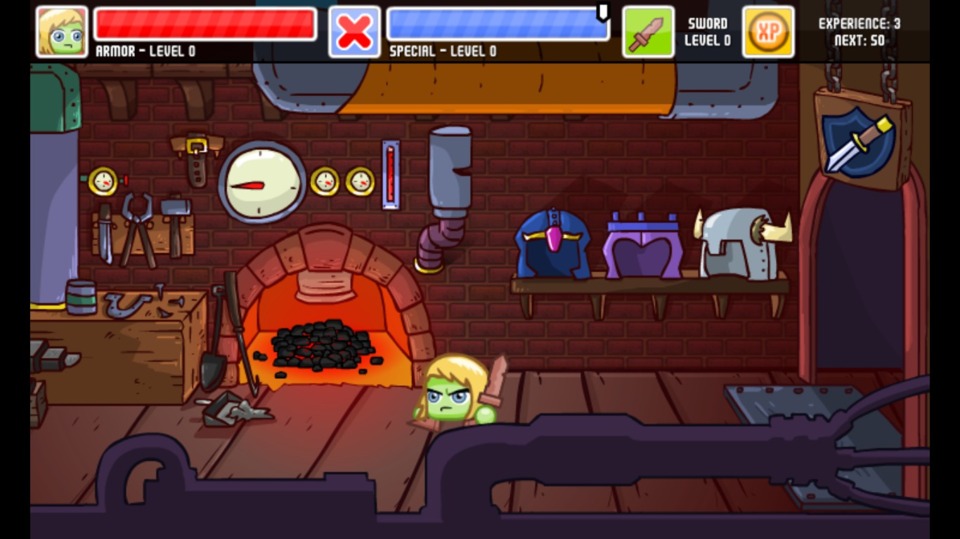
Beyond all that, the game's good for a quick afternoon of cute fun. It's odd to call a game "non-essential" or a "trivial frippery", not because they all are to some extent but because that's often the point. Indies in particular have managed to nail down what it means to create appealing, bite-sized games for next to nothing in lieu of some $60 retail game of epic scope and size. I guess this is a roundabout way of saying that, while Super Chibi Knight doesn't really offer anything substantial or innovative - even the idea of using your precocious grade-school-aged daughter as the source of the game's story and characters was explored in the earlier browser adventure game Sissy's Magical Ponycorn Adventure - it's not going to do you wrong if you pick it up for a song in a Steam sale and want something enjoyable enough that you won't feel like it wasted the handful of hours you spend in its company.
Oceanhorn: Monster of Uncharted Seas!
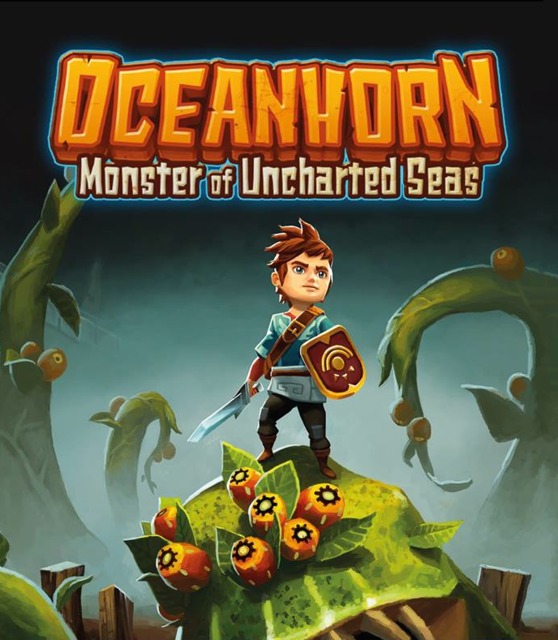
I'm not quite done with Oceanhorn, but I probably will be by Monday. It's a compact homage to The Wind Waker, the GameCube Zelda that suffered some (fairy) sling(shot)s and arrows at the time but is now widely regarded as one of the best in the series many years later, and while Oceanhorn can be a bit rough in spots it nails what makes Zelda great.
What makes Zelda great, incidentally, is not something I found time to convey in that blog on Indie Zelda takes that I posted earlier. To me, the core of the game is how great it makes you feel whenever you make progress. Whether it's the booming "YOU TOTALLY KILLED THAT GUY" message in giant letters in Dark Souls, or the little guitar riff in recent Call of Dutys whenever you level up in the multiplayer, games have found visceral if almost subliminal ways of punctuating rewards to maximize their effect on us. We play games for a myriad of reasons, but for most of us it's to tackle an objective and succeed, raking in the positive feelings of the accomplishment; it's why those who decry walking simulators tend to scrabble for an answer as to why they don't count as games with the pathetic "because there's no fail state or challenge". It can an integral part of the game-playing experience, if perhaps not a vital one, and some games are more savvy than others when it comes to delivering that sense of achievement. Zelda's definitely one of those, perhaps even the best: whether it's the theatricality of opening a chest, the four-note victory trumpets or the seven note piece that indicates that a secret has been discovered, the game uses sound and music in such a subtle yet powerful way that it's one of more oblique (and thus, hard to imitate) secret weapons in the series' arsenal. There's countless other small touches like that in every Zelda which go largely unnoticed, being as effective as they are, and is evidently one of the easier things to miss when creating a Zelda clone that is inevitably of lesser quality.
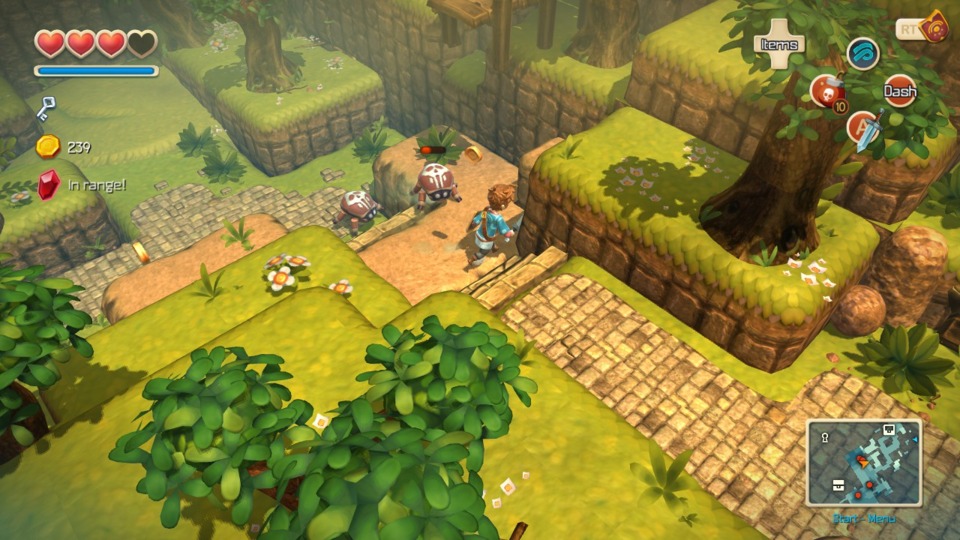
Oceanhorn doesn't completely capitalize on that sort of psychological magic, but the spirit is intact. Every time you solve one of its puzzles, or beat one of its bosses, or uncover one of its secrets, you get the same little endorphin rush you'd get if Link were the one to bomb that wall or shoot the giant octopus three times when its back was turned. It's the joy of discovery combined with the joy of accomplishment, and highlighting its presence is the perhaps the most direct approbation I could make when discussing Oceanhorn as a worthy if minor pretender to the Hero of Time's throne.
As I said, it's not perfect: the localization can be a little off in places, there's lots of weird little visual glitches, the sailing sequences seem even more superfluous here than they were in Wind Waker and there is the occasional distinct lack of making an effort when trying to distinguish the game from its famous inspiration: the fact that the hero looks almost identical to Link in his Outset Village jammies doesn't do the game any favors in trying to set itself apart. Yet in that regard it does all right in some other places: the game has an interesting upgrade mechanic that is based on earning experience points. XP is most frequently earned by killing enemies, though only in small amounts. More often, the player will need to find chests that hold larger XP "crystals" that can provide anywhere between twenty-five to several hundred XP in one go, as opposed to the two or three you'll find from most enemies. However, the biggest boosts come from the in-game achievement system. Each new island you visit will reveal three of these achievements, those three in particular often having some relevance to the island you're on; these might include a challenge to "burn ten items with the fire spell" on the very same island that hosts the dungeon where the fire spell is found. Others might be game-wide, like visiting every island or collecting at least one of a certain type of collectible on every island that has them. Gaining levels is how the player acquires larger quivers and bomb bags, plus a whole range of other bonuses. Oceanhorn also has a fishing mini-game which, in retrospect, is a conspicuous absence in Wind Waker beyond whenever Link has to wake up the fishman for a new map or hauls up chests with the salvage claw.

My favorite thing that's happened in Oceanhorn is related to another aspect it has closely in common with Zelda games, and to an equal extent SpaceWhippers: you'll frequently sail away from an island with less than 100% completion and at least one chest separated from the rest of the landmass by a bridge of platforms one space apart. When you finally find the item in a later dungeon that allows you to cross these gaps and revisit all those islands to pick up what was left behind, it's nothing short of euphoric. Perhaps I'm revealing too much about my own completionist proclivities here (and really, I've gone to that well far too often of late in my blogs), but it's just more proof if proof was needed that while Oceanhorn might have a flawed exterior, its core is solid gold.
